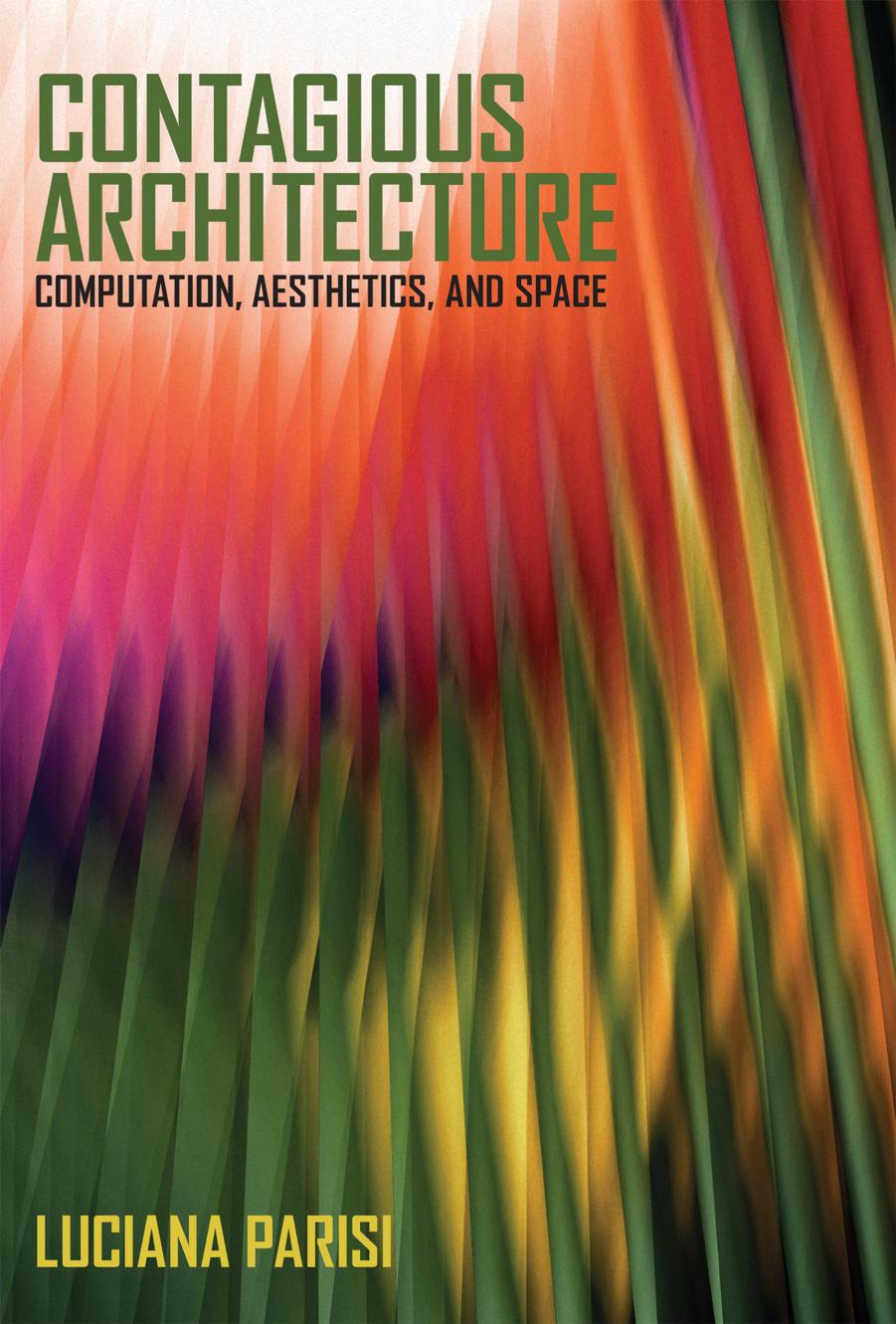Contagious Architecture: Computation, Aesthetics, and Space by Luciana Parisi

Author:Luciana Parisi [Parisi, Luciana]
Language: eng
Format: epub, pdf
Tags: Social Science, Media Studies, Philosophy, Criticism, Computers, Human-Computer Interaction (HCI)
ISBN: 9780262312622
Google: _hQHBAAAQBAJ
Publisher: MIT Press
Published: 2013-03-08T00:31:44.084014+00:00
Figure 3.2
doubleNegatives Architecture (dNA) (Sota Ichikawa, Max Rheiner, Ãkos Maróy, Kaoru Kobata), Corpora in Si(gh)te, Yamaguchi Center for Arts and Media, 2007. Courtesy of Sota Ichikawa.
A Zigbee Sensor Network was used to collect data, and several cameras were set up in the external environment to observe the surrounding target area. The real-time camera images were merged with the generated images from the corpora units. The parameters of 3D perspective, drawing from the viewpoint direction, view angles, and so on, were recalculated with the camera image. The audience was free to explore the structure process by selecting views from the two or three outdoor cameras that could be controlled with touch panel monitors. In the end, it was not really the audience that controlled the generation of the space; instead, the lived experience of space relied on the intersubjective interaction of many first-person views of environmental variations computed by a program.
From the standpoint of enactive cognition, the algorithmic processing of data according to the individual viewpoint of cellular automata may not be sufficient to explain how this computational space is experienced. In other words, in this project there is no room for a reflexive suspension of a naive experience, which instead may only account for the direct registering of data. This is important, because according to enactivism naive experience describes what happens while it happens, without being able to process data at a distance, reflecting on what happened. In other words, the algorithmic calculation of changing sensorimotor data on behalf of cellular automata still delimits the experience of embodied cognition to functional computational processing. Nevertheless, while this computational architecture may not satisfy the expectation of a neurophenomenological experience of space, it is true to say that this project aims to include the environment (and first-person perceptions) in the process of neural adaptation by incorporating live data, and by establishing particular points of view in the computation of space. This constitutes a neurophenomenology of data.
From this standpoint, the Corpora in Si(gh)te project offers us a notion of soft thought that is not directly a manifestation of the neuroarchitecture of the brain (as in the case of AlloBrain) but that adds external data to the internal software processing. According to this perspective, soft thought is activated from the external data that cellular automata evaluate and thus respond to by creating visual patterns that intersect or cross through and are added upon an existing physical architecture. However, because neurophenomenology conceives of the external world as the productive ground that guarantees new data to experience, which corresponds to first-person views or rather reflections on data, it is clear that this approach cannot account for the possibility of a computational thought that is not subsumed into the kaleidoscopic images derived from first-person neuroperceptive experience. To understand soft thought away from the neuroarchitecture of the brain and the neurophenomenology of first-person experience, it is necessary to account for it according to its own procedures of selection and evaluation of data.
3.0.3 Negative prehension
Despite
Download
Contagious Architecture: Computation, Aesthetics, and Space by Luciana Parisi.pdf
This site does not store any files on its server. We only index and link to content provided by other sites. Please contact the content providers to delete copyright contents if any and email us, we'll remove relevant links or contents immediately.
Aircraft Design of WWII: A Sketchbook by Lockheed Aircraft Corporation(31767)
The Great Music City by Andrea Baker(21195)
Call Me by Your Name by André Aciman(18952)
The Art of Boudoir Photography: How to Create Stunning Photographs of Women by Christa Meola(17834)
Shoot Sexy by Ryan Armbrust(17133)
Plagued by Fire by Paul Hendrickson(16630)
The Secret History by Donna Tartt(16607)
Portrait Mastery in Black & White: Learn the Signature Style of a Legendary Photographer by Tim Kelly(16478)
Adobe Camera Raw For Digital Photographers Only by Rob Sheppard(16380)
Photographically Speaking: A Deeper Look at Creating Stronger Images (Eva Spring's Library) by David duChemin(16151)
Bombshells: Glamour Girls of a Lifetime by Sullivan Steve(13100)
Pimp by Iceberg Slim(12922)
Ready Player One by Cline Ernest(12828)
The Goal (Off-Campus #4) by Elle Kennedy(12423)
Art Nude Photography Explained: How to Photograph and Understand Great Art Nude Images by Simon Walden(12339)
Kathy Andrews Collection by Kathy Andrews(10506)
Thirteen Reasons Why by Jay Asher(7782)
Wonder by R.J. Palacio(7723)
Goodbye, Things by Fumio Sasaki(7719)
